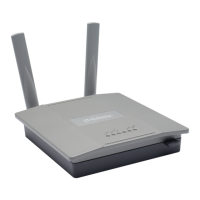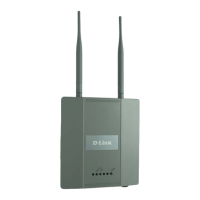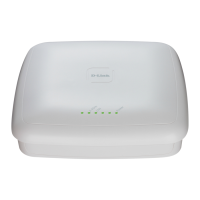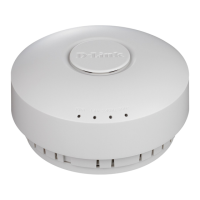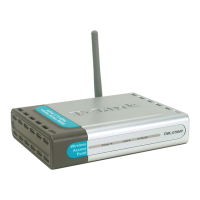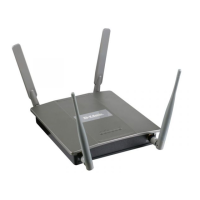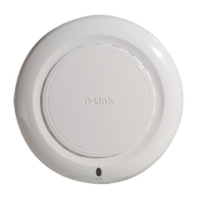Unied Access Point Administrator’s Guide
Page 57
January 2015
Section 4 - Managing the Access Point
•) Both APs participating in a WDS link must be on the same Radio channel and using the same IEEE 802.11
mode. (See “Modifying Radio Settings” on page 40 for information on conguring the Radio mode and
channel.)
•) When 802.11h is operational, setting up two WDS links can be difcult.
To congure WDS on this AP, describe each AP intended to receive handoffs and send information to this AP. For each
destination AP, congure the elds listed in the table below.
Field Description
Spanning Tree
Mode
Spanning Tree Protocol (STP) prevents switching loops. STP is recommended if you
congure WDS links.
Select Enabled to use STP
Select Disabled to turn off STP links (not recommended)
Radio For each WDS link on a two-radio AP, select Radio One or Radio Two. The rest of the
settings for the link apply to the radio selected in this eld. The read-only Local Address will
change depending on which Radio you select in this eld.
Local Address Indicates the MAC addresses for this AP.
For each WDS link on a two-radio AP, the Local Address reects the MAC address for the
internal interface on the selected radio (Radio One on wlan0 or Radio Two on wlan1).
Remote Address Specify the MAC address of the destination AP; that is, the AP on the other end of the WDS
link to which data will be sent or handed-off and from which data will be received.
Click the drop-down arrow to the right of the Remote Address eld to see a list of all the
available MAC Addresses and their associated SSIDs on the network. Select the appropriate
MAC address from the list.
Note: The SSID displayed in the drop-down list is simply to help you identify the correct
MAC Address for the destination AP. This SSID is a separate SSID to that which you set for
the WDS link. The two do not (and should not) be the same value or name.
Encryption You can use no encryption, WEP, or WPA (PSK) on the WDS link.
If you are unconcerned about security issues on the WDS link you may decide not to set
any type of encryption. Alternatively, if you have security concerns you can choose between
Static WEP and WPA (PSK). In WPA (PSK) mode, the AP uses WPA2-PSK with CCMP
(AES) encryption over the WDS link.
Table 27 - WDS Settings
If you select None as your preferred WDS encryption option, you will not be asked to ll in any more elds on the
WDS page. All data transferred between the two APs on the WDS link will be unencrypted.
Note: To disable a WDS link, you must remove the value congured in the Remote Address eld.
WEP on WDS Links
The following table describes the additional elds that appear when you select WEP as the encryption type.
Field Description
Encryption WEP
WEP Select this option if you want to set WEP encryption on the WDS link.
Key Length If WEP is enabled, specify the length of the WEP key:
•) 64 bits
•) 128 bits
Key Type If WEP is enabled, specify the WEP key type:
•) ASCII
•) Hex

